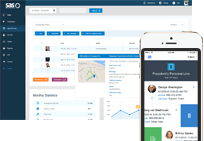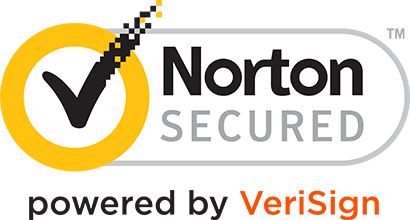- Log In
- Support
- Company
- Contact Us
- Live answers @ 1-888-532-4794
Call Center Training Program Part 2: Training Techniques
In our first post, we covered soft skills training for call center agents to take the guesswork out of teaching call center staff the art of communication. While having a presentation to present is a great tool, there are a number of effective call center training techniques that can be utilized to smoothly navigate the new hire learning curve. And because you may be catering to an audience of employees with varying learning styles, it’s important to pepper in a traditional approach with a few things that aren’t necessarily in every training department’s arsenal. Here are SAS’ top four best practice items to incorporate into your methodologies for effective and efficient education, whether you’re helping newbie call center representatives learn the ropes or giving existing staff a refresher course on the hallmarks of superior service.
#1. Create a training binder, and record companion video tutorials.
If you have nothing else in your training program, you should, at the very least, have your call center training material in one spot. We recommend each agent have a procedures binder with step-by-step instructions on how to do pretty much everything that call center staff will do on a daily basis. The more detailed the tutorials, the less likely that the employee will find themselves at a loss and inclined to ask questions. Sure, they may have questions on the “why,” but ideally, the right training material shouldn’t leave them with questions on the “how.” In fact, with self-study of written tutorials and a few minutes spent reviewing basic video walk-throughs of common procedures, new hires may almost be able to train themselves.
Works well for: This technique works well for individuals who learn better by reading on their own.
#2. Spend a good amount of time in the classroom, where group discussion can help elaborate on critical points.
When call centers are hiring, they’re usually bringing on several people at the same time. Classroom training courses can be valuable not only because it’s the fastest way to give staff the same instruction in the same way, but also because it is a great forum for questions that everyone else may be thinking and only one person isn’t afraid to ask. Instructor-led training is essentially a live version of what’s in your training binder, and elaborating on the “why” of key responsibilities may be the extra step that helps new hires commit pertinent details to memory.
Of course, every teacher has their own style; however, certain elements must be uniform, across the board. Speak clearly, and ensure that your volume is loud enough to reach the back of the training room. Pause at the end of every topic or throughout discussion on complex processes, and ask if anyone has any questions on the material. (If you wait until the end, people may forget what they wanted to ask.) And always refer back to the training binder. You might have consolidated a variety of tutorials into one PowerPoint presentation, so it’s important to remind new hires that they have all the answers at their fingertips.
Works well for: This technique works well for individuals who learn better by participating in group discussions where they can feed off of other people’s ideas and questions.
#3. Use scripted role play and improvised “what if” scenarios to offer customer service representatives an opportunity to work through sticky situations without having any adverse effects on your clients.
Remember when you were in middle school and the teacher would ask for volunteers to read aloud or assist with an experiment? Well, those are really helpful techniques for adult learning, too. Role play for call center training is a great way to get new or seasoned agents exposure to unfamiliar situations. Take a few hours of classroom learning, and dedicate it to running through real-life examples of scenarios that call center staff will likely encounter multiple times throughout the course of their employment. One way to do this is to transcribe actual phone calls that quickly went south, and have two employees read the script – one as the caller, and one as the operator.
First, go through the script as-is, and tout this as a prime example of what not to do. Then, ask the employees how they would do things differently. “What if” you find yourself in this position? What would you do or say to produce a more positive outcome? See what they come up with on their own, and be sure to provide specifics on how their supervisors would expect them to manage challenging calls. The more of these “do this, not that” situations that you go through, the more comfortable new hires will feel when they find themselves in similar circumstances.
Works well for: This technique works well for individuals who learn better by using a more hands on and intuitive approach where they can develop their own process.
#4. Set aside time for every trainee to shadow their colleagues and watch what they’ve learned in action.
Every call center should have headsets or phone monitoring capabilities that enable trainees to listen in on calls without being heard. This is a vital piece of the preparation puzzle – driving knowledge home by seeing and hearing what is expected of them in action. After the training binders and tutorials, the classroom education and role play, you’ll want to pair new hires with your best representatives so that they can get a feel for how the call center software works and what approaches ensure a top-notch customer experience.
It’s also a good idea to have them shadow several employees that may have diverse yet equally effective communication styles. That opens the door to outside-of-the-box solutions, thinking on their feet, and recognizing that there may be a bunch of ways to garner the desired outcome depending on how the caller presents themselves. Shadowing is an invaluable tool, taking what they’ve learned from second-hand experience and assimilating it into their own approach once they’re ready to field calls. Whenever possible, encourage trainees to ask questions in between calls if something comes up that is unfamiliar or confusing. Better to take a moment to work out minor issues before they turn into major issues down the line.
Works well for: This technique works well for individuals who learn better by watching someone else.
In the process of trying to teach staff about soft skills, empathy, and navigating difficult situations, it’s imperative that you don’t lose those skills yourself. So, however you choose to educate your customer service representatives, make sure they know that trainers and supervisors are there to provide additional instruction and support, when necessary. Outstanding leaders are available, approachable, and always ready to lend a hand and contribute to every new hire’s transition from timid trainee to call center success story. The stronger the leader, the stronger the team!
Don’t miss part 3 – putting it all together on the call center floor.
Categories
- Advice (32)
- Answering Service 101 (18)
- Best Practices (10)
- Call Center Jobs (6)
- Call Center Software (20)
- Comparison (2)
- Customer Service (30)
- Funny (31)
- Holidays (19)
- Industry Hacks (19)
- Infographics (53)
- International (1)
- Medical (8)
- News (12)
- Phone Etiquette (2)
- Phones (14)
- Pricing (8)
- Quizzes (3)
- Receptionist (11)
- SAS Products (29)
- Scripting (4)
- Services (5)
- Small Business (25)
- Starting Up (7)
- Tips and Tricks (19)
- Uncategorized (1)
- Videos (19)
- Workplace (6)
Recently writen
- Call Center Script Best Practices: Advanced Script Block Tips to Optimize Your Answering Service
- January 2025 Release Notes – Adjustments to Call Details Timeline, New Scripting Updates, Live Transcription, and more!
- April 2024 Release Notes – Voicemail Greetings, Ability to Access Websites With a Username and Password, and more!
- March 2024 Release Notes – New Add-On, Settings Revamp, and more!
Follow Us
How about a demo?
We'll show you how our web portal works and answer any questions you have about SAS.
Schedule a demo







